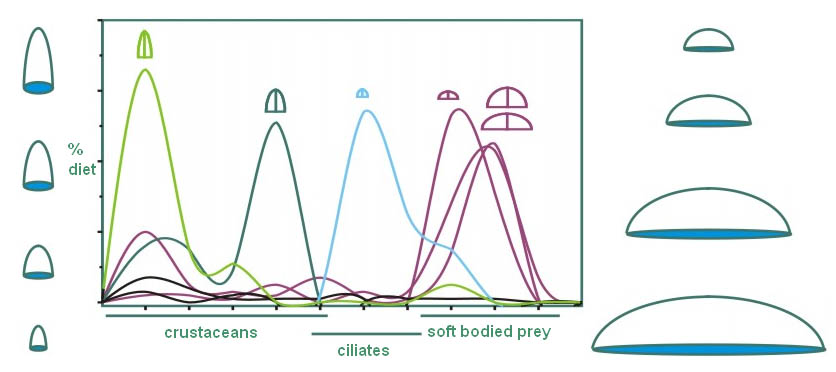 Jellyfish feeding and ecology
Jellyfish feeding and ecology
|
|
|
|
|
This figure summarizes the differences in prey selection and, consequently, ecological impact that is observed between prolate and oblate jellyfish.

Prey selection by prolate medusae who swim using jet propulsion and forage as ambush predators is determined by a combination of their encounter rates and retention efficiencies with different types of prey. As a result, they often are highly selective and feed on larger more motile prey. Jet propulsion is ideal for ambush foraging because, while it may be energetically expensive, it is highly effective at enabling the medusae to reposition rapidly and minimize the time spent swimming and not feeding. Another consequence of jet propulsion for medusae is that it constrains their maximum size. Consequently, the combination of prey capture mechanisms, small size and gut capacity of ambush medusae limits the trophic impact they have on prey standing stocks.
Oblate rowing jellyfish species who forage as cruising predators generally exhibit overlapping diets consisting of slow-moving soft-bodied prey. Rowing propulsion enables cruising medusae to efficiently entrain and feed on large volumes of water as they swim and, in addition, it eliminates the size constraints imposed by jet propulsion. Consequently, the larger sizes and high clearance rates of cruising medusae have enabled them to have large trophic impacts such that they have been repeatedly observed limiting prey standing stocks and structuring pelagic ecosystems.
 |
 |
 |
 |
